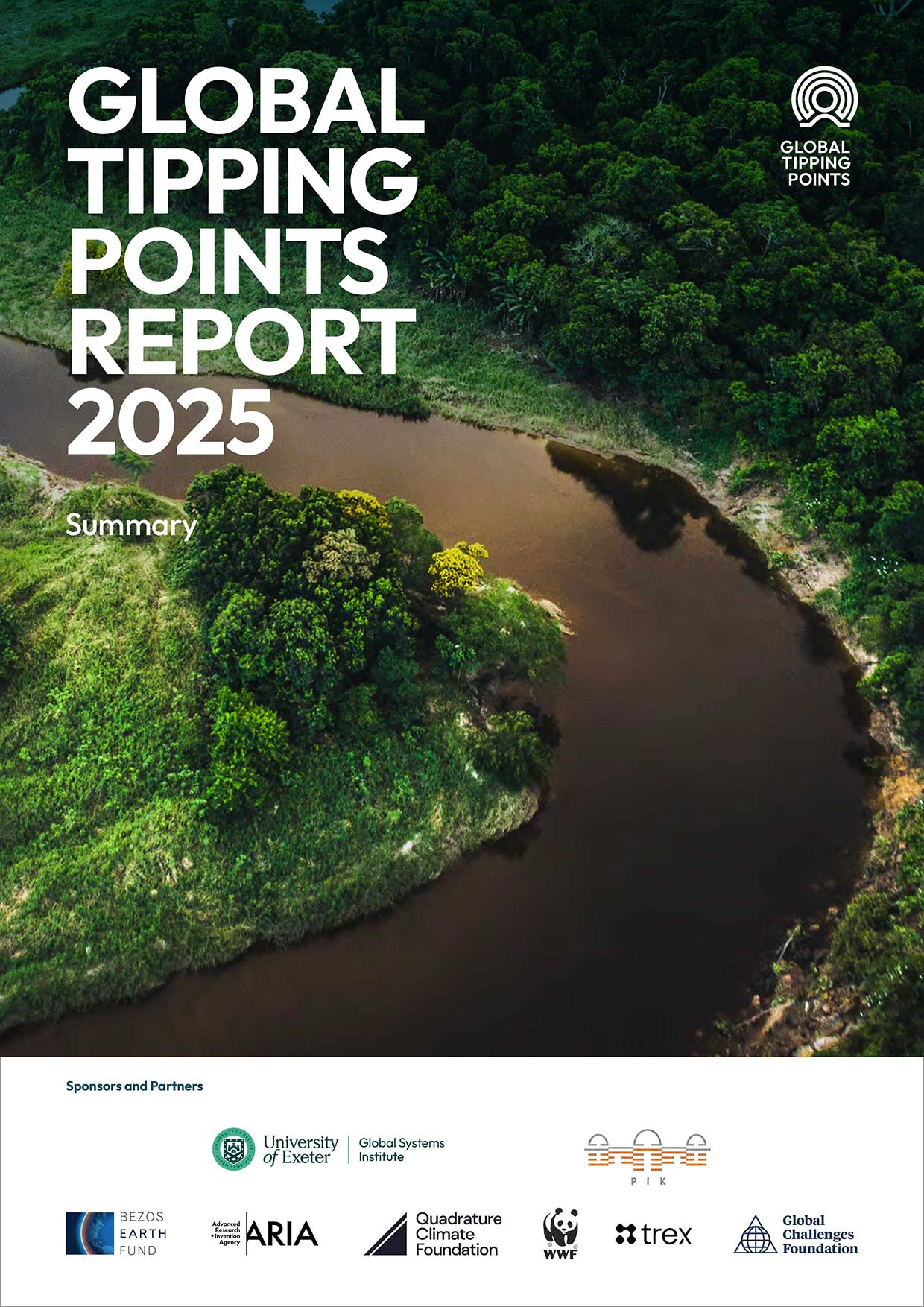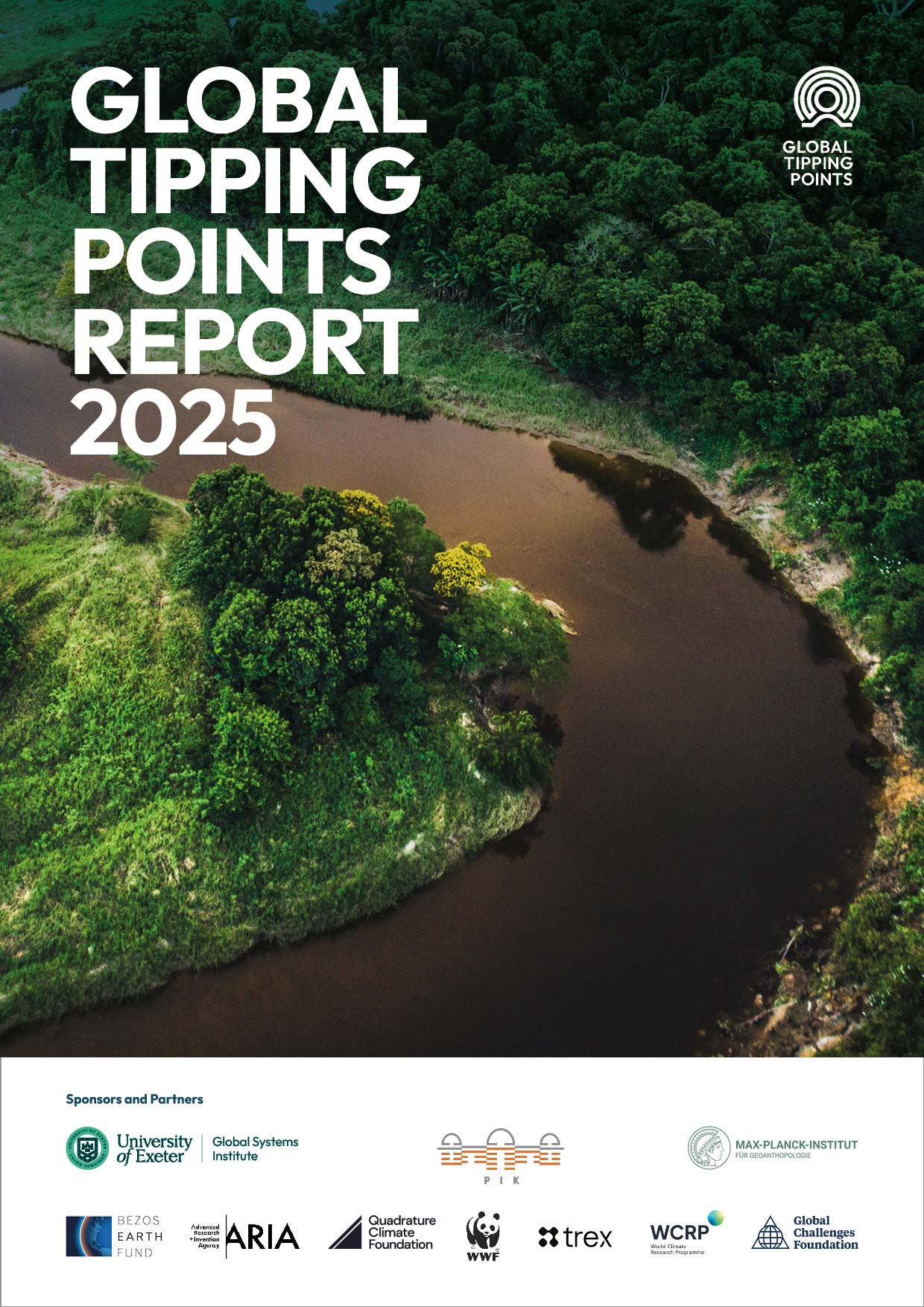Earth System Tipping Point Risks
Earth system tipping points pose profound risks to national security, food security, health and wellbeing.
Key Messages

Earth system tipping points pose profound risks
- Tipping points threaten the stability of the Earth system, which our society and economy fundamentally rely on. Societal development, wellbeing, prosperity and economic health are threatened by Earth system tipping points.
- Earth system tipping points create diverse and interconnected risks that are different to other climate impacts, often characterised by irreversibility, deep uncertainty and potential for cascading failures across natural and human systems.

New risk assessment approaches are needed for tipping points
- Traditional risk assessment fails for Earth system tipping points: Conventional impact-probability matrices capturing individual climate impacts are inappropriate for tipping point risk analysis, due to uncertainty, nonlinear dynamics and the systemic scale and scope of interactions between impacts and their cascading effects.
- Assessing tipping point risks can benefit from specialised approaches including risk registers that translate Earth system changes into policy-relevant “risk currencies” while capturing cascading effects and system interactions.

Cryosphere tipping points may already have been crossed
- We have high confidence that ice sheets – from Greenland to West Antarctica – have warming tipping points leading to irreversible collapse, locking in long-term multi-metre sea level rise and have been at risk since at least 1°C of global warming.
- While Arctic summer sea ice is unlikely to reach tipping points, Antarctic sea ice may have a tipping point that could already be underway, although highly uncertain.
- We have medium confidence in potential regional tipping points in permafrost and glaciers, which would respectively amplify emissions and commit some regions to total deglaciation.

Biosphere tipping points are approaching faster than we thought
- Warm-water coral reefs have experienced the worst bleaching event on record over 2023-25 and the central estimate of their thermal tipping point of 1.2°C global warming has been crossed.
- The Amazon rainforest has faced two years of intense El Niño-induced drought and the combined effects of deforestation and climate change put it at risk below 2°C of global warming.
- We now recognise river deltas and peat bogs as potential tipping systems, identify the potential for localised mangrove tipping with high confidence and the potential for local-scale temperate forest tipping with low confidence.

Ocean and atmosphere circulation are already at risk of tipping points
- Recent modelling supports the Atlantic Meridional Overturning Circulation (AMOC) and Sub-Polar Gyre (SPG) deep convection having tipping points, which cannot be ruled out at current warming levels, but limited models and observations means their likelihood of tipping remains uncertain.
- In the Southern Ocean, dense shelf water formation may be declining and could reach a tipping point, but understanding of its interactions with ice remains limited.
- Recent modelling supports the Indian summer monsoon having tipping dynamics, although evidence remains limited, whereas evidence against tipping dynamics in the ‘jet stream’ has strengthened.

Interactions between tipping systems tend to increase risk
- Out of 20 climate tipping system interactions assessed, most are destabilising, but a few may have a stabilising effect.
- The AMOC is the key global mediator of tipping point interactions, featuring in 45% of all assessed tipping point interactions.
- A vicious cycle may form where permafrost thaw could lead to amplified Arctic sea ice retreat, which may lead to enhanced inland permafrost degradation and so on.

Overshooting 1.5°C increases the risk of crossing multiple climate tipping points
- Several systems (land permafrost, Greenland ice sheet, West Antarctic ice sheet and sub-polar gyre) likely have a tipping point around 1.5°C global warming.
- Several more systems (mountain glaciers, boreal forests and AMOC) likely have a tipping point around 2.0°C global warming.
- Crossing these tipping points becomes more likely for each 0.1°C of global warming.

Peak warming and time above 1.5°C must be minimised to limit tipping risks
- Limiting tipping risks requires minimising peak global warming and overshoot duration above 1.5°C and ultimately stabilising global warming below 1.5°C before 2100 and below 1.0°C on longer timescales.
- Fast tipping systems are vulnerable to even short-lived overshoots of their tipping points and therefore they constrain the allowable peak global warming.
- Slow systems can tolerate temporary overshoots of their tipping points but constrain the allowable duration of overshoot and the eventual temperature stabilisation level.

Warming feedbacks and other anthropogenic stressors increase tipping risks
- Most tipping systems are expected to amplify global warming if tipped, making it more difficult to return to lower global warming levels in an overshoot period.
- Additional pressures, such as other anthropogenic stressors, interacting tipping systems and destabilising Earth system feedbacks, can amplify
tipping risks further. - Decreasing direct anthropogenic stressors can reduce the likelihood of climate-induced tipping for some systems (e.g. halting Amazon deforestation).

Earth system tipping points have huge impacts that demand further research
- There is an urgent need for dedicated research on the impacts of crossing Earth system tipping points especially their systemic, cascading impacts through societies.
- We provide an initial analysis of these impacts relying heavily on inferences from general climate impact literature applied to anticipated tipping point changes.
- Our assessment suggests that crossing Earth system tipping points will cause profound risks across nine critical domains, including food security, energy infrastructure, economic stability and social cohesion, affecting billions globally.
- Earth system tipping points are also a national security issue as food, water and heat stresses will impact populations. If climate change is unchecked then mass mortality, forced displacement and severe economic losses become likely.

All regions and billions of people face major impacts from Earth system tipping points
- Critical tipping point risks exist for small islands and East Asia from ice sheet loss, for South Asia, Southeast Asia and Central America from monsoon disruption, for West Africa from AMOC collapse and monsoon disruption and for North Asia from permafrost thaw and boreal forest tipping.
- Major tipping point risks exist for Northeast America from AMOC collapse and ice sheet loss, for Northwest Europe from AMOC collapse and for the Amazon region from rainforest dieback.
- The greatest population is ultimately at risk from monsoon disruption, followed by ice sheet loss, AMOC collapse and the degradation of warm-water coral reefs.

Regional vulnerabilities to Earth system tipping points reveal extreme inequality
- Small Island Developing States face complete uninhabitability, South and Southeast Asia’s 3+ billion people depend on vulnerable monsoon systems and Arctic communities face total ecosystem transformation.
- Developed regions primarily face infrastructure and economic challenges.
- The most extreme gaps in regional preparedness for tipping point risks are in Small Island Developing States, West Africa, Central America and the Amazon basin.

The path humanity takes now matters enormously
What the Experts Say
Kirsten Dunlop
CEO, European Institute of Innovation & Technology Climate-KIC
David Armstrong McKay
University of Sussex, UK and Stockholm Resilience Centre, Sweden
Planetary Solvency
To find out more about the risks posed by Earth system tipping points, take a look at our Planetary Solvency work, a collaboration with the Institute and Faculty of Actuaries.
Sponsors and Partners







